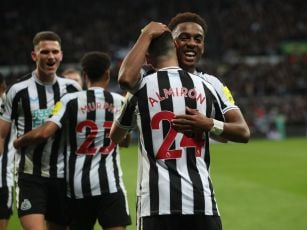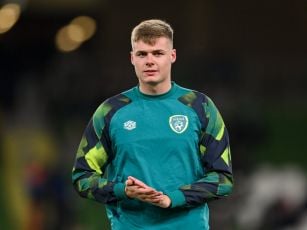Given our status as a smaller nation in European football and the proprietor of a selling league, club cores are not as relevant to Ireland.
Indeed, it's not just a selling league when we think of the League of Ireland since many players depart for British football by their mid-teens.
Thus, the Boys in Green will probably never be in a position to build around a core of players who have come through the same club or play together en masse.
That is a preserve of the larger nations at European Championships, whether it be England and Spain or Italy and Germany because they have big leagues with huge clubs.
With globalisation and the ebbs and flows of generational talent, sometimes it is not possible to build around a core of players lining out for the same club.
But when it is possible, it can have spectacular results.
Take Spain for example. It is no coincidence that their success came at a time when Barcelona were the top club in world football and underpinned by a crop of homegrown players who were all - Lionel Messi aside - Spain eligible.

Busquets, Carles Puyol, Santi Cazorla, Xavi Hernandez, Gerard Pique and Andres Iniesta, members of Spain's national soccer team talk before a team photo shoot with Costa Rica's president during their visit at the presidential palace in San Jose, Costa Rica, Monday Nov. 14, 2011. Costa Rica and Spain will play a friendly soccer match on Tuesday Nov. 15. All but Cazorla had come through the Barca academy (AP Photo/Arnulfo Franco)
With a similar system, apart from the fact they played with a double pivot thanks to the introduction of Xabi Alonso alongside Sergio Busquets, the overarching philosophy was the same.
Keeping the ball and dominating the flow of the game were two things Spain and Barcelona had in common, although possession was used as a more defensive tool for the national side at the 2010 World Cup. Six of the side that started the Euro 2012 final were Barca players at the time and additionally had all come through the youth ranks where they are all imbibed with the same philosophy.
It's also no coincidence that a nippy and intelligent forward like David Villa thrived at both Barcelona and Spain because of his suitability to the philosophy as other strikers failed to flourish.
Germany too won a World Cup final featuring a side with six Bayern Munich players in the starting line-up - some of whom came through the same academy. Stylistically, the Germans' possession-based concept was not a million miles away from Pep Guardiola's model at Bayern.
Becoming accustomed to playing with each other in training and on the pitch every week leads to things clicking much more naturally which is crucial at international level.
Since international managers don't have much time to work with their players, getting stars from a myriad of clubs to gel together is not a simple task. But if a core know each other intimately at club level, that makes the job easier.

Italy goalkeeper Gianluigi Buffon consoles teammate Leonardo Bonucci after receiving their runners-up medals after the Euro 2012 soccer championship final between Spain and Italy in Kiev, Ukraine, Monday, July 2, 2012. (AP Photo/Ivan Sekretarev)
Take Italy for example. Juventus has often provided the Italian core for the national team and this time at Euro 2016, ex-Juve boss Antonio Conte has wisely chosen to field a trio of current Juventus centre-backs together as a back-three in front of Juve keeper Gigi Buffon, replicating the virtually unbreakable defence of the club scene.
England too could have done the same this time at Euro 2016 and to a degree they have.
Tottenham Hotspur were surprise Premier League title challengers this past season, driven by a core of young English talent.
Consequently Harry Kane, Dele Alli, Eric Dier, Danny Rose and Kyle Walker have all become fundamental members of the starting XI. Kane, Alli and Dier also have strong bonds on and off the pitch.
The question for Roy Hodgson though is whether to replicate Tottenham's pressing system as closely as possible as he builds around a young Spurs core.
And he has also had to ponder whether he has players at his disposal to match the style of the non-English Tottenham players like Mousa Dembele, Erik Lamela and Christian Eriksen to bring out the best in the Alli-Dier-Kane brigade. That would lead to questions about Wayne Rooney's suitability for the system for example - although to point fingers at the captain alone would be unfair.
The fact that they faced teams like Wales, Slovakia and Russia in the group phase means counter-attacking would not have worked and in truth because those teams wanted to soak up pressure before breaking forward themselves.
Thus, England have dominated possession in those games as they will be expected to do against a battling Iceland in the Round of 16, which actually makes Rooney useful in that system due to his lack of pace but additional ability to spread the play with long passes to the flanks.
But from past examples, building around a spine of club players in terms of personnel and style can show good results and maybe it's if they face more open sides later in the tournament that we could see England's potentially dangerous qualities on the break.
Download the brand new OffTheBall App in the Play Store & App Store right now! We've got you covered!
Subscribe to OffTheBall's YouTube channel for more videos, like us on Facebook or follow us on Twitter for the latest sporting news and content.








